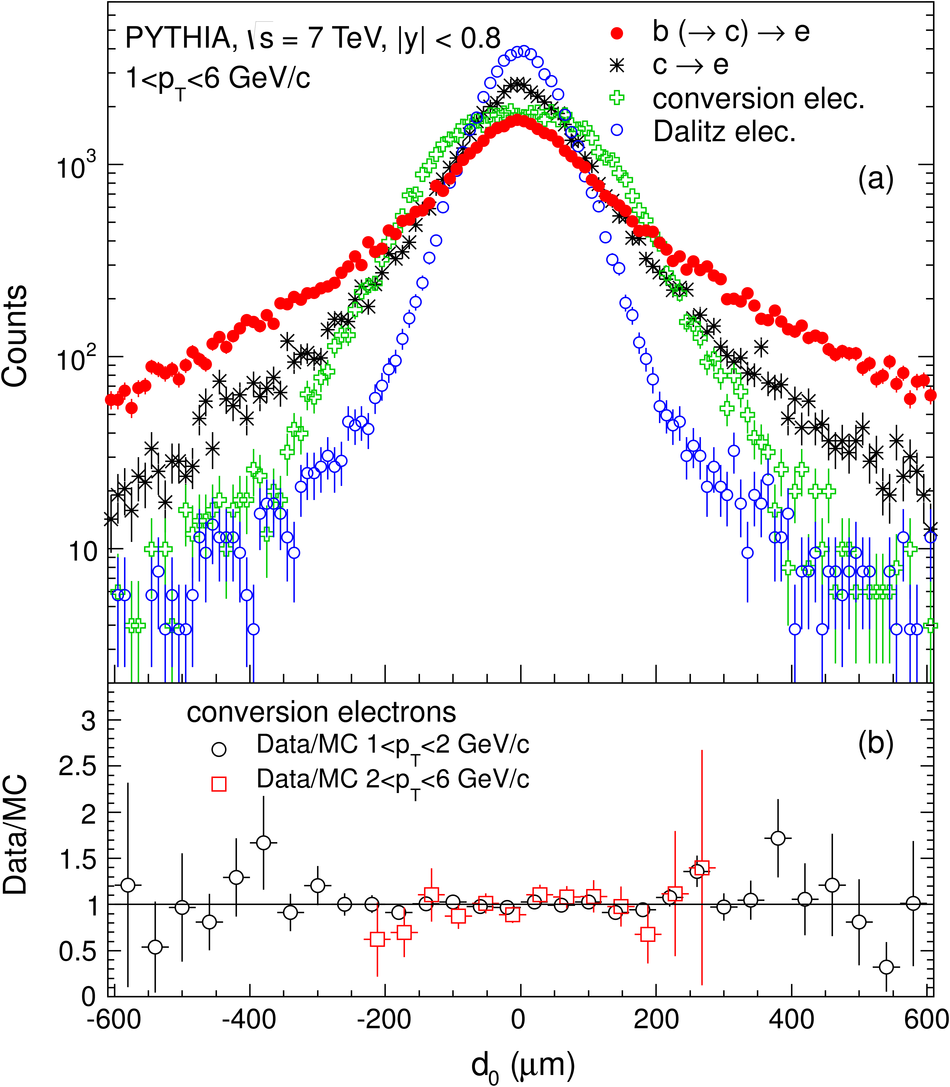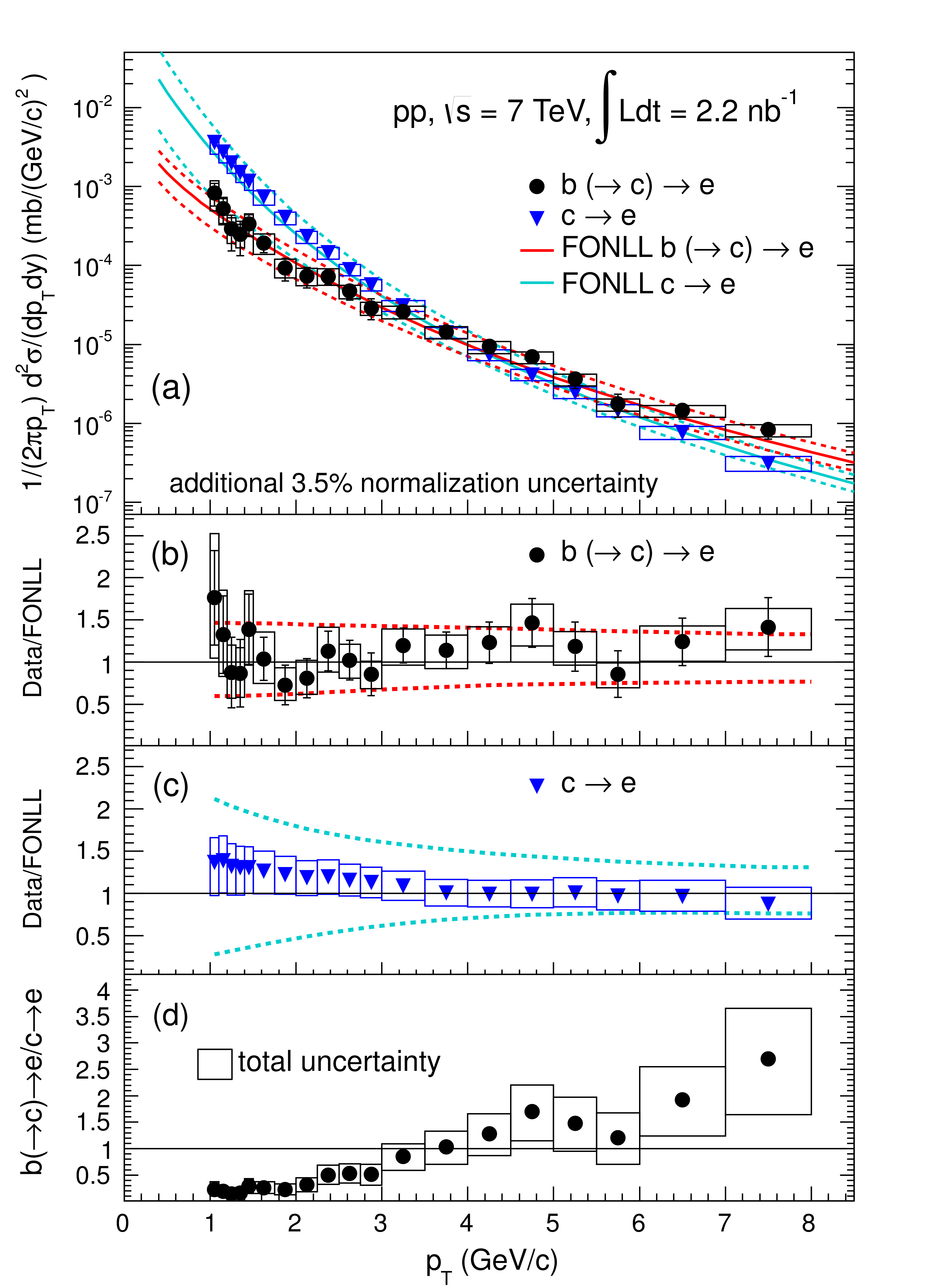The production cross section of electrons from semileptonic decays of beauty hadrons was measured at mid-rapidity (|y| < 0.8) in the transverse momentum range 1 < $p_{\rm T}$ < 8 Gev/c with the ALICE experiment at the CERN LHC in pp collisions at a center of mass energy $\sqrt{s}$ = 7 TeV using an integrated luminosity of 2.2 nb$^{-1}$. Electrons from beauty hadron decays were selected based on the displacement of the decay vertex from the collision vertex. A perturbative QCD calculation agrees with the measurement within uncertainties. The data were extrapolated to the full phase space to determine the total cross section for the production of beauty quark-antiquark pairs.
Phys. Lett. B 721 (2013) 13-23, Phys.Lett. B763 (2016) 507-509 (erratum)
HEP Data
e-Print: arXiv:1208.1902 | PDF | inSPIRE
CERN-PH-EP-2012-229






